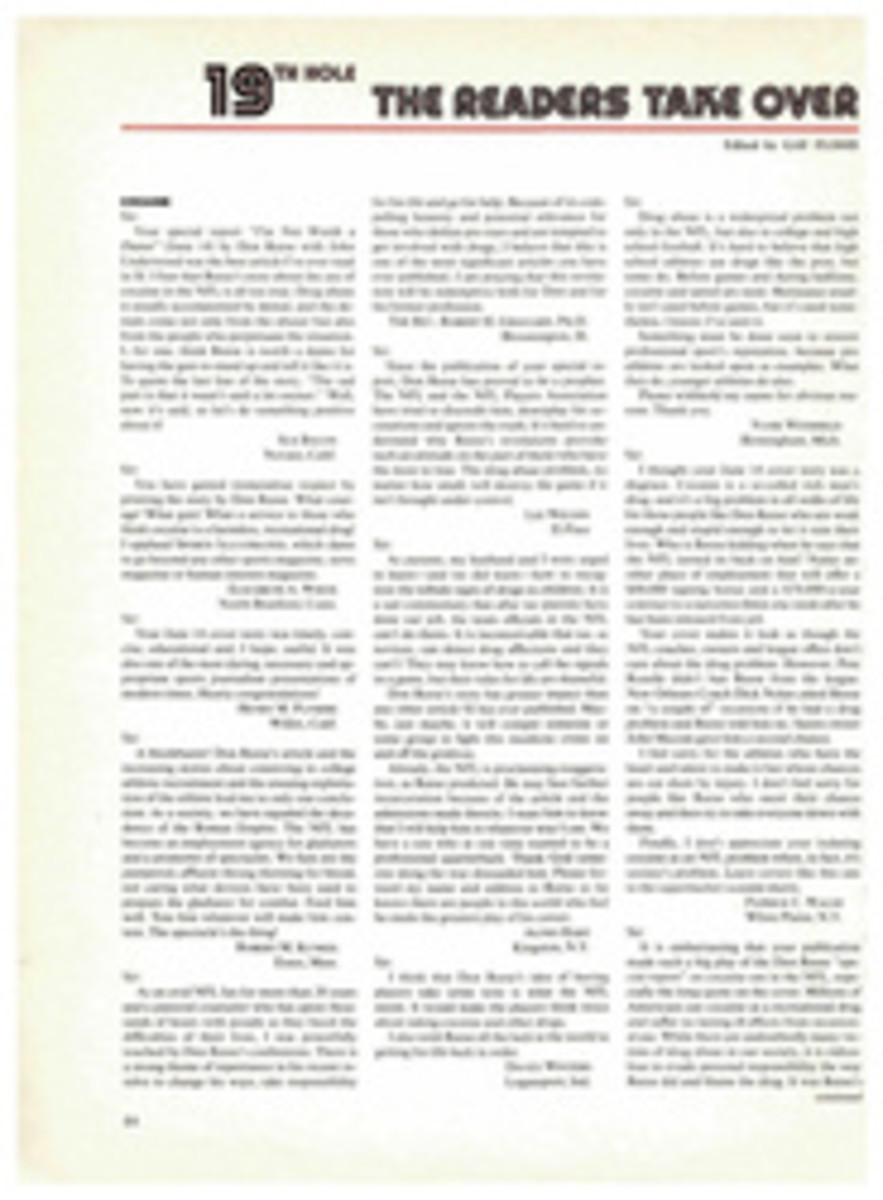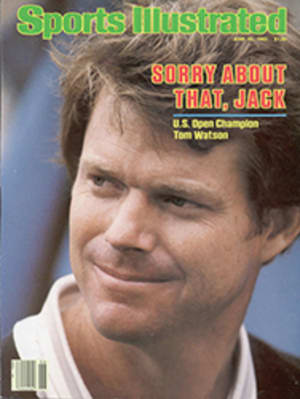
It was Yale, in a breather
This is the curious tale of how two former oarsmen from Cincinnati, a Brown grad and a Harvard grad, helped archrival Yale win a very big crew race last week. Elements of the story include six engineers and such altogether non-Ivy League figures as Ulysses Grant's maternal grandparents, a subordinate of the Marquis de Lafayette and a four-foot-long snake. The climax came on Saturday afternoon at East Fork State Park near Cincinnati, where four eight-oared racing shells met in the first National Collegiate Rowing championships on Harsha Lake—Yale, Cornell, California and Syracuse. A loudspeaker crackled and the starter called out, "Etes vous pr√™ts? Partez!" Then 32 oar blades made the water boil.
The Yale boat was off-balance at the start, and coxswain John Sheffield instinctively raised his elbows to steady it. Two lanes over, Cal coxswain Mark Zembsch was nose-for-nose with him. It was supposed to be that way—Yale and Cal were the favorites—and so it went for 10 strokes. Then Yale edged ahead, and Sheffield found he had a new problem staring him in the face. Literally. In the fever of the moment, his oarsmen were forgetting to breathe. That happens in crew races; rowers have blacked out. So Sheffield shouted, "Breathe!" And then, after 30 strokes, "We have two seats on the pack!"
Hold on, though. What was a 2,160-acre lake doing in all that farmland? And how did the nationals come to be there? To take the last question first, the credit goes to a 42-year-old Cincinnati lawyer named Bill Engeman, who stroked the Brown crew in three of its formative years, 1959, '60 and '61. In 1965, after graduating from the University of Virgina law school he moved to Cincinnati, eventually becoming a partner in the firm of Taft, Stettinius, and Hollister. In 1980 he and a group of friends raised some money and sold the state of Ohio on building a water-sports center at East Fork, 28 miles from downtown. Last November, they obtained sanction for the championship regatta from the United States Rowing Association.
There had never been a universally accepted national crew championship. The IRAs in June at Syracuse had claimed that distinction, but too many rowing powers regularly ignored it. The big East and West Coast crews held their own separate sprint championships each year. And the 9-year-old San Diego Crew Classic, which does bring major crews together, is held in early April, which means that crews from cold climates have had no chance by that time to reach their potential. Occasionally, in recent years, a national champion of sorts was selected in England, of all places, when two or three strong U.S. crews went to the Henley Royal Regatta in July.
But Engeman's new nationals were the straight stuff. The winners of four important competitions were given expenses to participate—other crews could pay their own way. The publicity handout read, "This is akin to inviting the winners of the Rose Bowl, Orange Bowl, Sugar Bowl and Cotton Bowl to play off for the National College Football Championship."
Cal had won the Pac-10 Championships, Yale had taken both the Eastern Sprints and the Harvard/Yale four-mile classic, and Cornell was the victor in the IRAs. Syracuse had a losing season but was improving toward the end, and, as Coach Bill Sanford said, "We want to find out some things." In addition to the glory to be gained in Cincinnati, there was the very substantial lure of the winner's prize—round-trip air fare to next week's Henley.
As for the origins of Harsha Lake, as recently as 10 years ago it didn't even exist. It was made by damming Elklick Creek and the east fork of the Little Miami River, much to the dismay of conservationists. Last week, the dead trees rising out of the water in the coves made for very strange rowing scenery, more suited to a national collegiate bass fishing championship perhaps. History buffs opposed the project, too. Numerous homes dating from the War of 1812 lining Elklick Valley were inundated. But the Army Corps of Engineers did throw the historians a few bones, so to speak. General Richard Collins, who fought with Lafayette at Yorktown, had been buried in a family plot in Elklick. His remains were disinterred and moved a quarter mile inland to the Old Bethel Methodist Cemetery, where Grant's grandparents, the Simpsons, are buried.
But at East Fork the oarsmen cared nothing for American history, and little for the regatta's origins, either. Their days were filled with practice. Between the two favorites there was a running debate as to which crew would be handicapped the more by its recent past. Cal hadn't raced since the Pac-10s in mid-May, and its training schedule in the week approaching the nationals had been interrupted by final exams. Bowman Paul Carson took his final in quantum physics on Thursday in Cincinnati, with Cal Coach Mike Livingston as proctor. "I'm holding it," Livingston said, "until I see how he does in the race." Yale, for its part, had peaked for its win at the Eastern Sprints in mid-May and then spent three weeks training for the four-mile race against Harvard the previous Saturday. Would training for a four-mile race hurt its performance over 2,000 meters?
Neither coach was making any rash predictions. Said Livingston, "We feel our crew is fast enough, but maybe it won't be fast enough here. We have no idea what the course will be like, and having to train through exams and race well the following weekend, that is a new experience for us."
Yale's Tony Johnson admitted, "One of the problems we face is having had two good races, and having accomplished everything we wanted to. Now, rather than just trying to repeat what we've already done, we have to get into something solid and distinctive for this race, or it won't work for us. I think the guys understand that."
Said Yale five-oar Brian (Bucko) Meyers: "Everyone's been training, we all brought our own boats, and one crew's going to be the fastest. Then there'll be no excuses and nothing to say except to congratulate the other guy."
At times the talk turned to less weighty matters. In a workout on the eve of the race, Cal men found themselves the object of unwanted attention from a large water snake. It swam toward the boat, head raised. "Suppose Yale put it there?" someone asked.
"Doesn't Eli mean snake?" said someone else.
At the 500-meter mark on Saturday it appeared to mean winner, for Sheffield was almost uncannily inspiring his oarsmen. "The big psych" he calls it. "We've got three seats on Cal," he told his men, and the boat gained. Then, "We've got five," and it gained some more.
Then Cal just wasn't there anymore. At 1,500 meters, into a considerable side-chop, the Yalies got this message from their commander: "It's you and Cornell." The Big Red, 14 pounds lighter per man than Yale, but with six engineering students—masters of leverage and angles—in the boat, held on to finish second, a length behind Yale. Cal faded badly, and Syracuse took third.
Said Sanford, "The water was awfully bad in that last 500 meters, but in flat water Yale might have won by even more."
Chuck Papesh, Yale six-oar and captain, who keeps records of such things, figured that his crew had rowed between 1,200 and 1,400 miles since the time the ice went out in Connecticut last March, almost certainly more mileage than any other college crew in the country. Getting ready for Harvard hadn't hurt Yale after all.
As the victorious crew floated beyond the finish line, Bill Engeman's launch came near. A Yale oarsman called to him, "Thank you, Mr. Engeman." Engeman gestured to a man beside him in the launch, a banker named William S. Rowe, chairman of the board of Cincinnati's Fifth Third Bank, the major contributor to the nationals. Rowe had been on the Harvard crew from 1936 to 1939 and stroked the varsity boat his senior year, and Harvard had beaten Yale over four miles in each of those years. Engeman told the Yalie, "You're here, in large part, because a Harvard man said you should be," which, considering all that had happened that afternoon, didn't upset the Yalies too much.
TWO PHOTOS
Having helped beat Cornell, Yale's three-oar, Jens Molbak, is heaved into Harsha.

